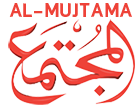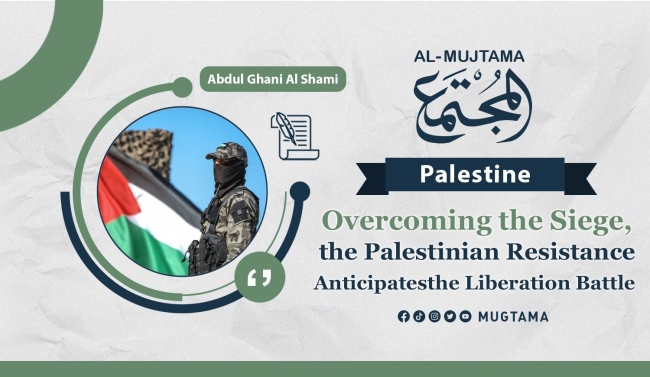Overcoming the Siege, the Palestinian Resistance Anticipates the Liberation Battle Featured
------------
Palestine
The mujahid (fighter) Nidal Farhat, one of the leaders of the “Al-Qassam Brigades,” couldn't contain his emotions and burst into tears as he launched the first locally-made rocket from the Gaza Strip towards the Sderot settlement in the spring of 2001.
After the rocket soared towards its target, Farhat rushed to the home of Sheikh Ahmed Yassin, the founder of the “Hamas movement,” to inform him of the achievement, saying, “The rocket reached beyond 5 kilometers.” Sheikh Yassin smiled as usual in response, telling him, “If it reaches 10 kilometers, you’ll get a kiss on your forehead from me.”
This story, with its apparent simplicity to some, narrates the depth of strategic thinking within the modern Palestinian resistance led by the “Al-Qassam Brigades.” It also tells the story of how the Palestinian resistance broke the siege imposed on the Gaza Strip and developed its military capabilities to reach its stage today, despite the wars and various strikes it has faced over the years.
Quantitative and Qualitative Evolution
Political writer and researcher Tamara Haddad confirms this by saying: Despite the 17-year blockade, the resistance has managed to penetrate its walls through following the field and operational military methods capable of breaking the security and economic blockade, making excellent use of technology and self-developed human capabilities. Through this, they improved all tools of training, arming, logistical, morale, security, and professionalism reinforcement.
She continued: The resistance, using the available self-tools, was able to manufacture “Yasin” missiles, “mortar” shells, and “RPGs” through technical learning and its practical application. This led to the enhancement of its field, professional, and operational military strength.
This became evident during this ongoing battle, and the resistance, despite facing one of the strongest armies in the region, remains resilient. Haddad adds: It's not just resilience, but it managed to inflict painful losses on the enemy in terms of soldiers and quality tanks, many of which were destroyed by the advanced tools of the Palestinian resistance, both quantitatively and qualitatively.
Victory Determinants
According to Tamara Haddad, the image of victory has moved from the battlefield to the screen. The resistance has successfully imposed its media image with strength due to its resilience and power on the ground. The resistance faces only two options: victory or martyrdom.
The key, according to the political researcher, is the will of the resistance manifested in its finest forms and the dedication of its cadres. Patience is another tool to achieve noble goals, such as breaking the siege, stopping gunfire, and emptying the prisons of the occupation of Palestinian prisoners. Therefore, the resistance remains steadfast on these determinants until victory is achieved, despite the obstinacy of the occupiers.
On a deeper level, Dr. Riad Shahin, a professor of Islamic history in Gaza, believes that the resistance is at the forefront not only in confronting “Israel” but also in facing the alliance led by the United States and Western countries, on top of which are Britain, France, Germany, Greece, Italy, and others. These countries possess the largest and most advanced military arsenals in the world, in contrast to Gaza, which has an area of only 360 square kilometers and a population of 2.3 million. Yet, it has a liberation army numbering only tens of thousands, mostly volunteers, armed with individual light weapons such as rifles, pistols, grenades, small and medium-range missiles, and drones, which are mostly locally manufactured.
Shahin adds, “In the language of logic and numbers, victory is inevitably for the alliance. However, our forces rely first on Allah the Almighty, then on its resistant individuals and the popular support, trusting in the justice of its cause. Its war against the Jews is a religious war, defending its land, sanctities, and cities that were occupied during a period of weakness the Arab and Islamic nations were going through. Additionally, it relies on the prayers of Quran memorizers, preachers, scholars, and the support of all the peoples of the world.”
The history professor emphasizes that the fundamental point is the societal support that has provided the resistance with the ability to adapt to difficult conditions and build internal, external, and regional alliances, enabling it to add new elements to its strength.
On his side, the Jordanian researcher, Hazem Ayyad, says, “The involvement of elites in the resistance has strengthened its ability to develop and adapt to reality and engage in various battles, in addition to its strong will. This round will undoubtedly be a pivotal point in the upcoming liberation battle.”


